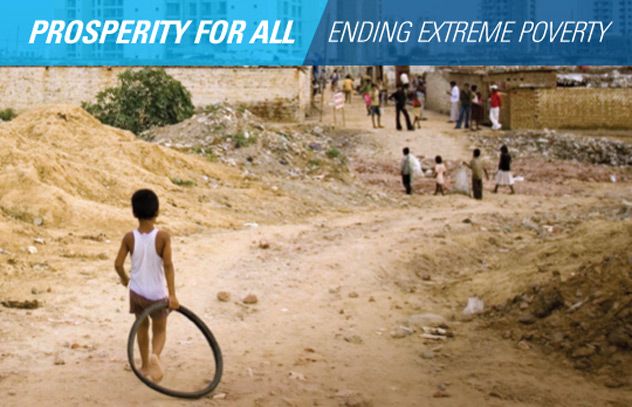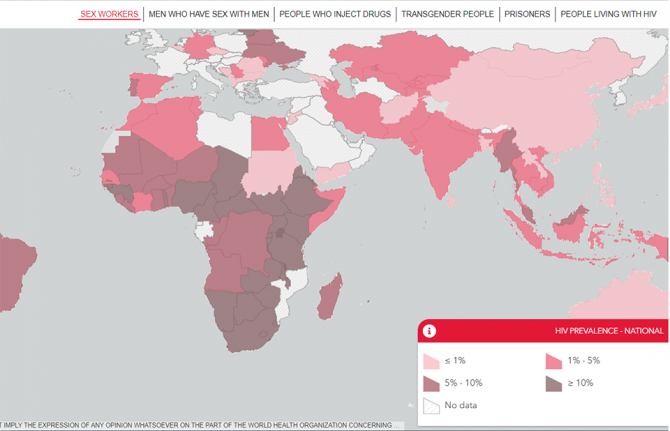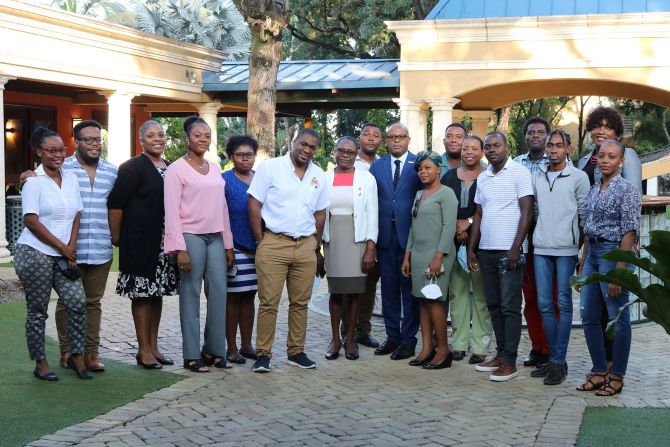

'Prosperity for all, ending extreme poverty': eradicating poverty requires more than growth, according to World Bank paper.
Feature Story
Growth is not enough to end extreme poverty, says World Bank Group
01 May 2014
01 May 2014 01 May 2014If the world is to effectively reduce poverty and reach key development goals in critical areas such as health and education, countries need to focus not only on achieving growth as an end in itself but on implementing policies that allocate resources to those who are extremely poor. This is the central message of a recent major World Bank paper that explores how nations can enhance shared prosperity and ensure that growth is of benefit across the board.
Prosperity for all, ending extreme poverty highlights the World Bank Group’s two bold goals to be achieved: eradicating extreme poverty so that no more than 3% of the global population live on less than US$ 1.25 a day; and raising income growth among the bottom 40% of earners.
World Bank Group President Jim Yong Kim recognized the hugely ambitious nature of the goals, but maintained that they can be reached with increased commitment and the right interventions. “To end extreme poverty, the vast numbers of the poorest … will have to decrease by 50 million people each year until 2030. This means that 1 million people each week will have to lift themselves out of poverty for the next 16 years. This will be extraordinarily difficult, but I believe we can do it. This can be the generation that ends extreme poverty.”
Growth alone is unlikely to end extreme poverty by 2030 given that, according to the report, as poverty falls growth tends to lift fewer people out of poverty: when growth occurs many of the lowest income earners are in such difficult situations that ameliorating their lives is very hard. So, identifying and focusing on the bottom tiers, in country-specific ways, is considered crucial to making sure that the world’s 1.2 billion poor are not left behind and can fulfil their potential, benefitting themselves, their communities and their nations. (Five countries, Bangladesh, China, Democratic Republic of the Congo, India and Nigeria, are home to nearly two thirds of the poor, nearly 760 million people.)
The paper also warns of the dangers of not tackling income inequality. In countries where it is rising, the effect of growth on poverty has been slowed or in some cases reversed.
Prosperity for all, ending extreme poverty suggests that the twin goals, critical to the post-2015 development agenda, can be achieved through promoting more inclusive growth and through proactive programmes, such as conditional and unconditional direct cash transfers, which have been shown to have a significant impact on education, employment and health outcomes. To achieve sustainable development it is seen as vital not simply to lift people out of extreme poverty, but, as the report contends, “It is also important to make sure that, in the long run, they do not stagnate just above the extreme poverty line due to lack of opportunities to continue to move toward better lives.”
To end extreme poverty, the vast numbers of the poorest … will have to decrease by 50 million people each year until 2030. This means that 1 million people each week will have to lift themselves out of poverty for the next 16 years. This will be extraordinarily difficult, but I believe we can do it. This can be the generation that ends extreme poverty.
Jim Yong Kim, World Bank Group President
The World Bank Group has acknowledged that HIV, inequality and extreme poverty are inextricably linked and need to be tackled jointly. Earlier in 2014, the Bank, alongside UNAIDS, committed to four areas of action, which include aligning health and development efforts towards ending extreme poverty and AIDS and urging the post-2015 development agenda to include targets towards ending AIDS, as well as the goal of universal health coverage, so that no one falls into poverty or is kept in poverty due to payment for HIV treatment or health care. There is also a commitment to promoting national and global monitoring and implementation research.
According to the paper, such monitoring and mapping on a wider socioeconomic scale will be essential to see the World Bank Group’s overarching twin poverty eradication goals become reality. More and better data will be required so that interventions can be evidence-informed and progress monitored. This research will help the world’s policy-makers attain more inclusive growth and ensure that sustainable prosperity is shared and that the bottom 40% can benefit from the full range of economic and development gains.



